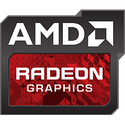Corning Launches Corning Gorilla Glass Ceramic
Corning Incorporated (NYSE: GLW) today announced the introduction of Corning Gorilla Glass Ceramic, an innovative, transparent, and strengthenable glass ceramic material to help bring advanced toughness to more mobile devices. Gorilla Glass Ceramic significantly improves drop performance on rough surfaces compared to competitive aluminosilicate glasses. The new material expands Corning's portfolio of durable cover materials for OEMs.
"Gorilla Glass has built a reputation of strength and resilience, and our new glass ceramic material continues this tradition. Designed to offer enhanced toughness, Gorilla Glass Ceramic reinforces our commitment to innovating and engineering high-quality, durable materials for display covers and enclosures," said David Velasquez, Vice President & General Manager, Corning Gorilla Glass.
"Gorilla Glass has built a reputation of strength and resilience, and our new glass ceramic material continues this tradition. Designed to offer enhanced toughness, Gorilla Glass Ceramic reinforces our commitment to innovating and engineering high-quality, durable materials for display covers and enclosures," said David Velasquez, Vice President & General Manager, Corning Gorilla Glass.

















































